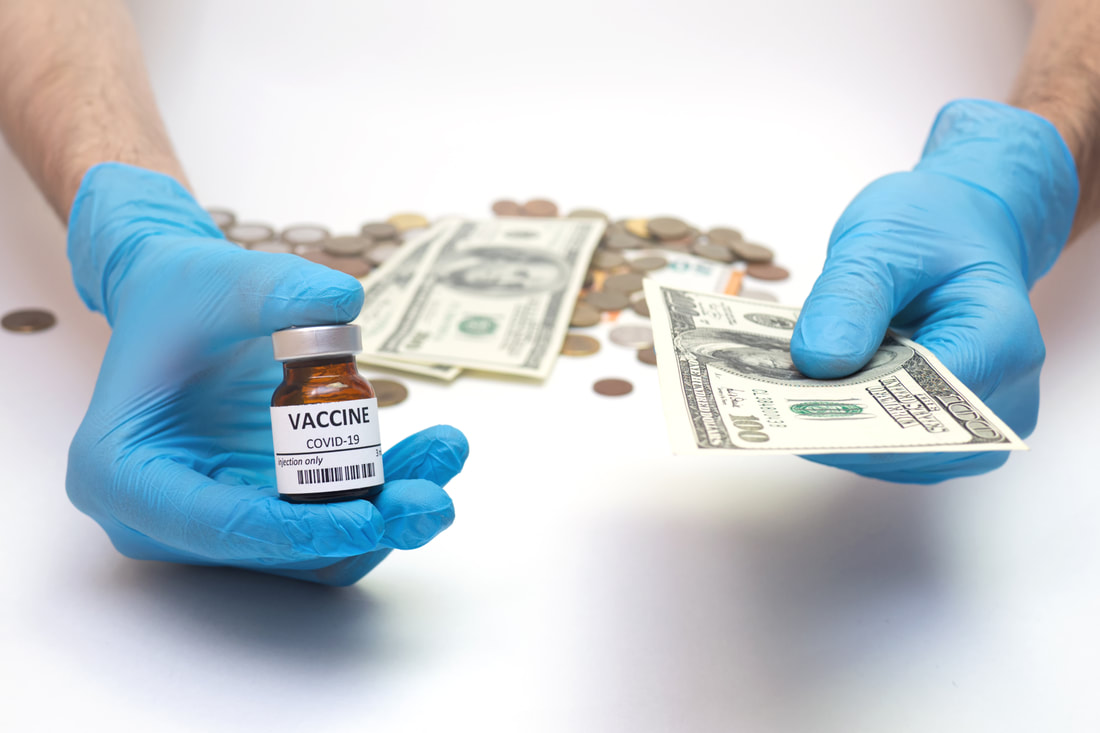Framing the Argument Our brains only have so much capacity, so how you frame the argument is critical. The following frames have been unsuccessful for the vaccine hesitant:
These frames failed for a variety of reasons. In many ways, we rebooted the problems we had with masks: indifference, defiance, skepticism, mistrust, misinformation, Trump-loyalty, and selfishness. Failure to achieve herd immunity will have long-lasting effects not just for those 30% but the global population. To prevent these negative externalities we need to bypass logic, emotions, and heartstrings, and frame the message around incentives. Positive & Negative Externalities A negative externality occurs when a third party incurs a cost due to some transaction between two other parties. Consider a person smoking a cigarette at the table next to you in a restaurant. Marlboro produced the product, Joe Smoker bought and consumed it, but you incur the cost of that exchange (secondhand smoke). The key is that Marlboro and the smoker chose to engage in the exchange and you did not, and while they receive net gains, you suffer a net loss—a negative externality. (Note: I have nothing against smoking; it was just the easiest example). With vaccines, the exchange produces positive externalities. Pfizer makes a vaccine, Joe Sore Arm receives it, and because that transaction mitigates the spread of COVID, society-at-large benefits. We are not part of Joe’s decision, but we benefit from it. Joe’s exchange is especially beneficial to those individuals (e.g., immuno-compromised) who are unable to complete their own exchange. Whereas the smoking example is a win-win-loss, vaccines represents a win-win-win. Overcoming Externalities
There are two ways to overcome externalities: penalize or incentivize the exchange that causes it. Policies are often put in place with the express purpose of reducing negative externalities. Smoking bans in restaurants reduce secondhand smoke; highway speed limits reduce fatal accidents. The problem is that policies created to reduce negative externalities are often framed as infringements on personal freedoms (e.g., the smoker gives up his right to smoke; the driver loses his freedom to drive fast). The aim of these policies is not to restrict individual liberty; the restriction is just the simplest means to an end. When no policy is in place to penalize negative externalities, individuals are not motivated to change their behavior. Heaps of evidence proved the effectiveness of masks, yet with no real punishment for not wearing one, many refused. Similarly, we cannot fine people for not getting the vaccine. Vaccine passports could be viewed as a penalty, but besides ethical issues, framing the argument this way only makes vaccine hesitant folks dig their heels in more. The other policy option is to use the carrot rather than the stick. Often, humans just need a nudge to alter their behavior in a way that leads to positive externalities. The government subsidizes the installation of solar panels. This represents a net gain for the homeowner, and because it lessens the strain on the power grid, a net gain for the entire community. Companies create wellness programs that reward healthy living. The employee benefits through better health, the company benefits through increased productivity, and society benefits by a net reduction in health insurance premiums. Cash Payments for Vaccine Hold-Outs All sorts of companies are offering incentives to induce vaccinations, but free donuts and hotdogs might just not be enough for the final 30%. Creating a COVID sweepstakes could work, but why not offer people cold hard cash to take the vaccine. A recent study finds that offering $100 would be effective. But who among the unvaccinated population would be nudged by cash incentives? Anti-vaxxers don’t get the measles vaccine so why would they get one for COVID? Conspiracy theorists think the vaccine causes infertility, so that’s another non-starter. Some people cannot or should not receive the shot for a variety of reasons (e.g., medical conditions). Skeptics don’t trust all the data in the world, so $100 probably won’t overcome that hurdle. That leaves us with what I call the Apathetics. Apathetics aren’t anti-vaccine, just indifferent. Perhaps they’ve already had COVID, the CVS is too far of a drive, they don’t like needles, they feel healthy enough, they just don’t feel like it. This is the target market that may be nudged by a $100 payout. Thirty-percent of Americans is roughly 100 million people. Of those, let’s say one-third (30 million) are Apathetics. Giving each of them a $100 bill with their shot means that, at a cost of 3 billion dollars, we could move our total vaccinated population from 70%-80%. Is it fair? Not really. Is it worth it? Yes. Every new infection is a chance for mutation, so when you consider the externalities, it’s a bargain. Three billion dollars to move the needle on herd immunity is a message frame I can get behind.
0 Comments
Leave a Reply. |
AuthorColin Gabler is a writer at heart. Archives
May 2024
Categories |


 RSS Feed
RSS Feed